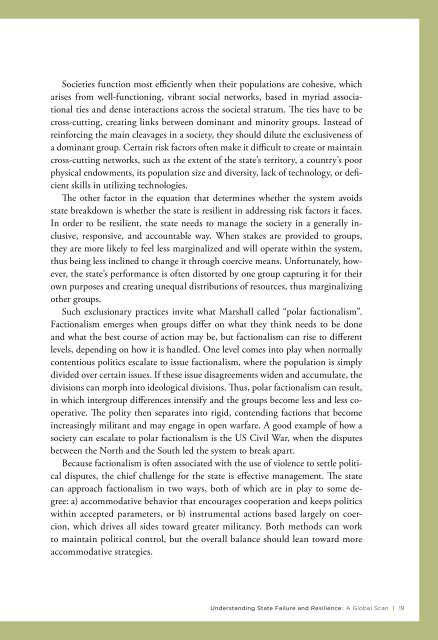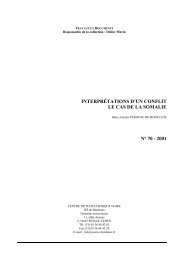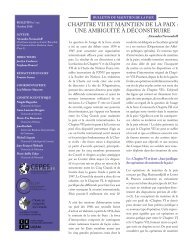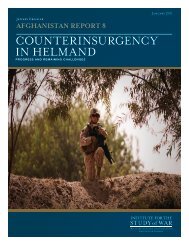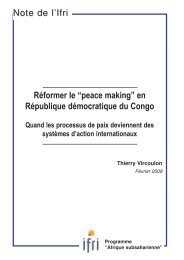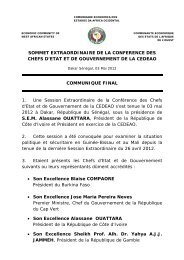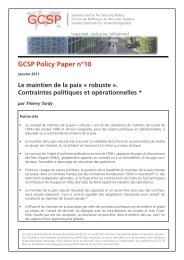engaging fragile states - Woodrow Wilson International Center for ...
engaging fragile states - Woodrow Wilson International Center for ...
engaging fragile states - Woodrow Wilson International Center for ...
Create successful ePaper yourself
Turn your PDF publications into a flip-book with our unique Google optimized e-Paper software.
Societies function most efficiently when their populations are cohesive, which<br />
arises from well-functioning, vibrant social networks, based in myriad associational<br />
ties and dense interactions across the societal stratum. The ties have to be<br />
cross-cutting, creating links between dominant and minority groups. Instead of<br />
rein<strong>for</strong>cing the main cleavages in a society, they should dilute the exclusiveness of<br />
a dominant group. Certain risk factors often make it difficult to create or maintain<br />
cross-cutting networks, such as the extent of the state’s territory, a country’s poor<br />
physical endowments, its population size and diversity, lack of technology, or deficient<br />
skills in utilizing technologies.<br />
The other factor in the equation that determines whether the system avoids<br />
state breakdown is whether the state is resilient in addressing risk factors it faces.<br />
In order to be resilient, the state needs to manage the society in a generally inclusive,<br />
responsive, and accountable way. When stakes are provided to groups,<br />
they are more likely to feel less marginalized and will operate within the system,<br />
thus being less inclined to change it through coercive means. Un<strong>for</strong>tunately, however,<br />
the state’s per<strong>for</strong>mance is often distorted by one group capturing it <strong>for</strong> their<br />
own purposes and creating unequal distributions of resources, thus marginalizing<br />
other groups.<br />
Such exclusionary practices invite what Marshall called “polar factionalism”.<br />
Factionalism emerges when groups differ on what they think needs to be done<br />
and what the best course of action may be, but factionalism can rise to different<br />
levels, depending on how it is handled. One level comes into play when normally<br />
contentious politics escalate to issue factionalism, where the population is simply<br />
divided over certain issues. If these issue disagreements widen and accumulate, the<br />
divisions can morph into ideological divisions. Thus, polar factionalism can result,<br />
in which intergroup differences intensify and the groups become less and less cooperative.<br />
The polity then separates into rigid, contending factions that become<br />
increasingly militant and may engage in open warfare. A good example of how a<br />
society can escalate to polar factionalism is the US Civil War, when the disputes<br />
between the North and the South led the system to break apart.<br />
Because factionalism is often associated with the use of violence to settle political<br />
disputes, the chief challenge <strong>for</strong> the state is effective management. The state<br />
can approach factionalism in two ways, both of which are in play to some degree:<br />
a) accommodative behavior that encourages cooperation and keeps politics<br />
within accepted parameters, or b) instrumental actions based largely on coercion,<br />
which drives all sides toward greater militancy. Both methods can work<br />
to maintain political control, but the overall balance should lean toward more<br />
accommodative strategies.<br />
Understanding State Failure and Resilience: A Global Scan | 19


